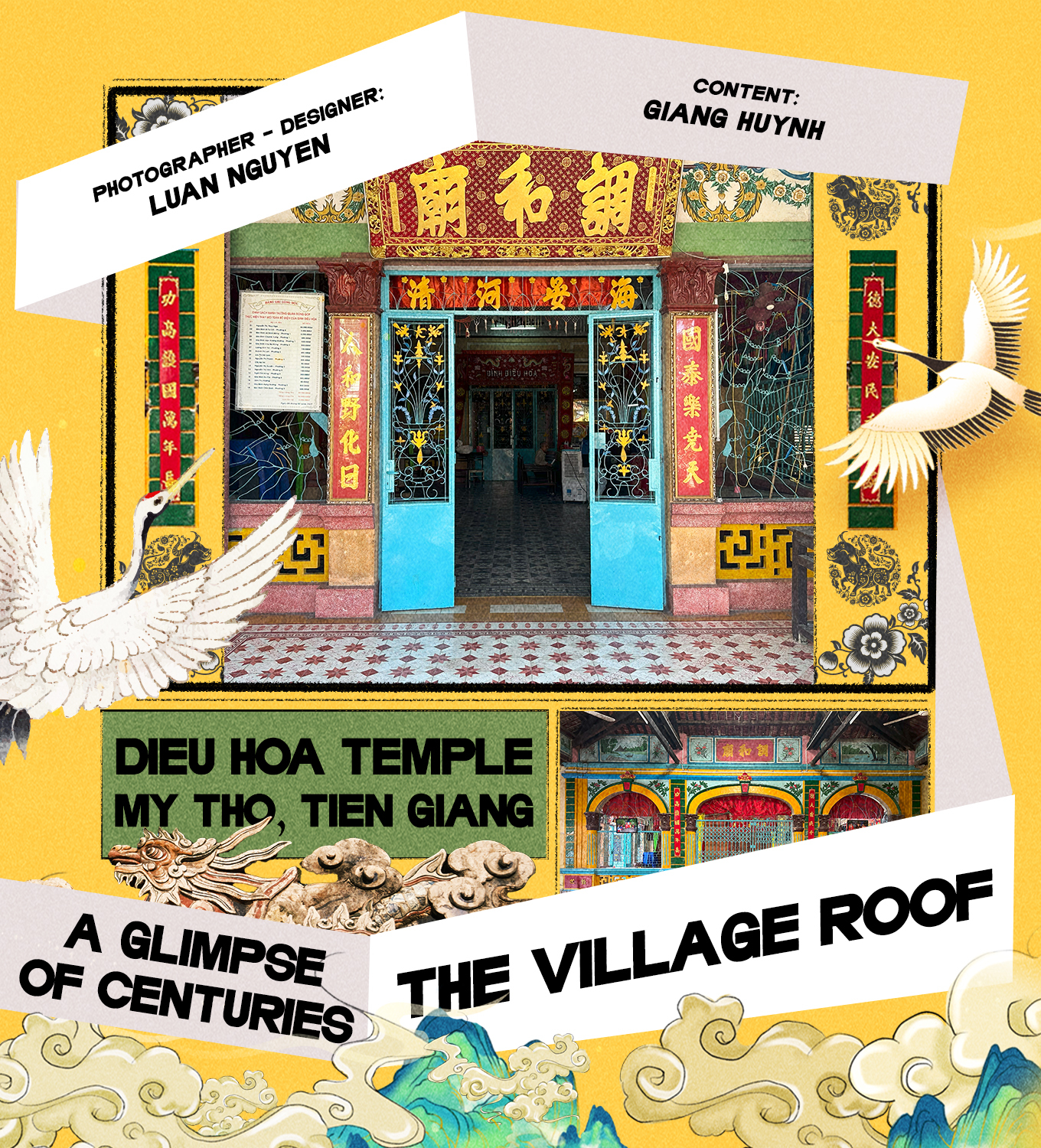
DIEU HOA TEMPLE - A GLIMPSE OF CENTURIES UNDER THE VILLAGE ROOF
Located on Trinh Hoai Duc Street in My Tho, Tien Giang Province, is the ancient Dieu Hoa Temple, home to many precious artifacts. Unlike other temples that frequently open for visitors, Dieu Hoa only opens during festivals or when special groups arrive.
Built around 1792, Dieu Hoa served both as a place of worship for the local guardian deity and as a rest stop for Nguyen Dynasty officials on their local missions. By the mid-19th century, when it was no longer used by officials, the temple remained solely a place of worship for the guardian deity and village founders.
“Though many temples are dedicated to the guardian deity, each one holds its own unique stories of history and culture. Only through exploring the preserved architecture and artifacts can we truly grasp the stories beneath each roof.”
At the front is the traditional tam quan gate (the gate has three entrances), typical in Vietnamese temples and communal houses. Above the gate is a prominent image of "Luong Long Chau Nguyet" (Two Dragons Worshiping the Moon) with an intricately curved roof.
Passing through the gate and the red brick courtyard, we were greeted by Uncle Ha, the temple caretaker, who guided us inside.
“Dieu Hoa Temple is an architectural masterpiece, showcasing the rich cultural identity of the nation through its construction and intricate carvings within.”
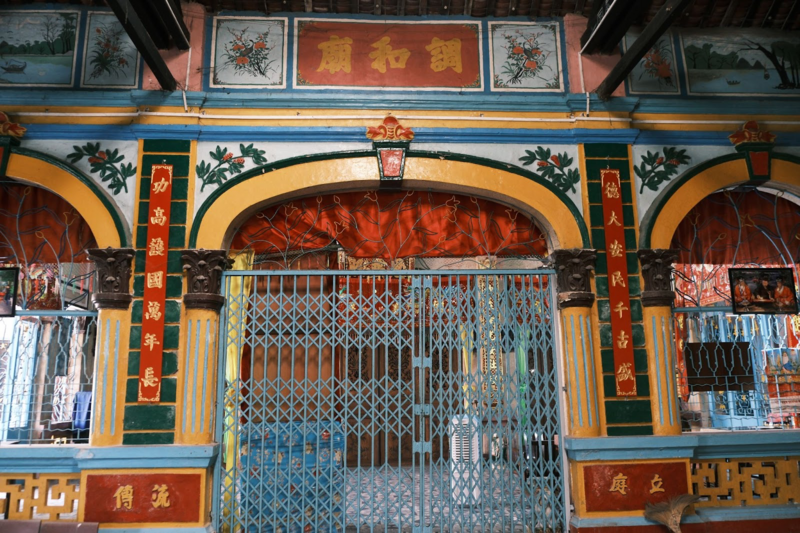
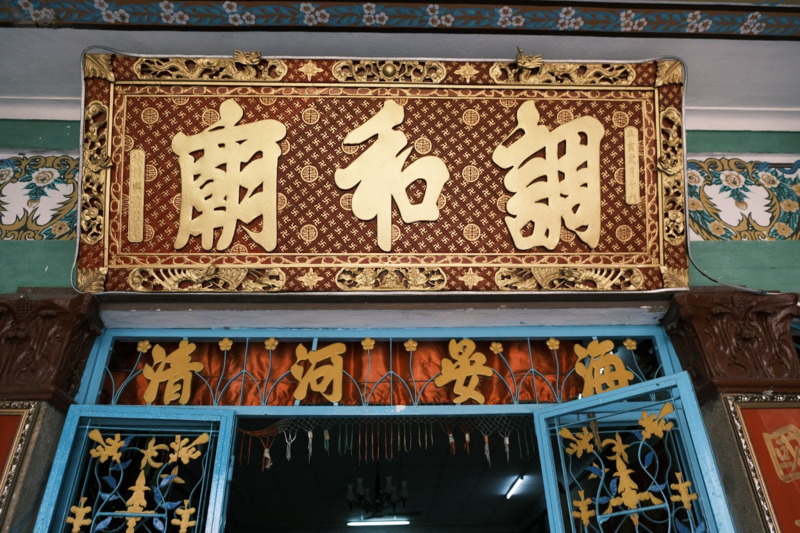
The temple is built in the "Tam" style, consisting of the vo ca*, the middle hall, and the main sanctuary. Contrary to its simple and modest exterior, the interior is overwhelming with the numerous preserved artifacts.
*Vo ca is the front section of a traditional Vietnamese temple. It is typically used for ceremonial performances and traditional opera during the Ky Yen festival.
“It felt like stepping into another world as we wandered through the main sanctuary, marveling at relics older than a lifetime…”
Inside, the temple preserves collections of bronze incense burners, ceremonial weapons, and numerous ceramic artifacts dating from the 18th and 19th centuries. In the main sanctuary and middle hall, intricate carvings of "Dragons and Phoenixes in Pursuit of the Pearl" and "The Eight Immortals Riding Animals" caught our attention. Above the panels, we saw exquisite carvings of the Four Seasons, the Four Sacred Animals, Plum Birds, and Deer under Pine Trees. At the top, a large gilded horizontal lacquered board was adorned with carvings of the Four Sacred Animals.
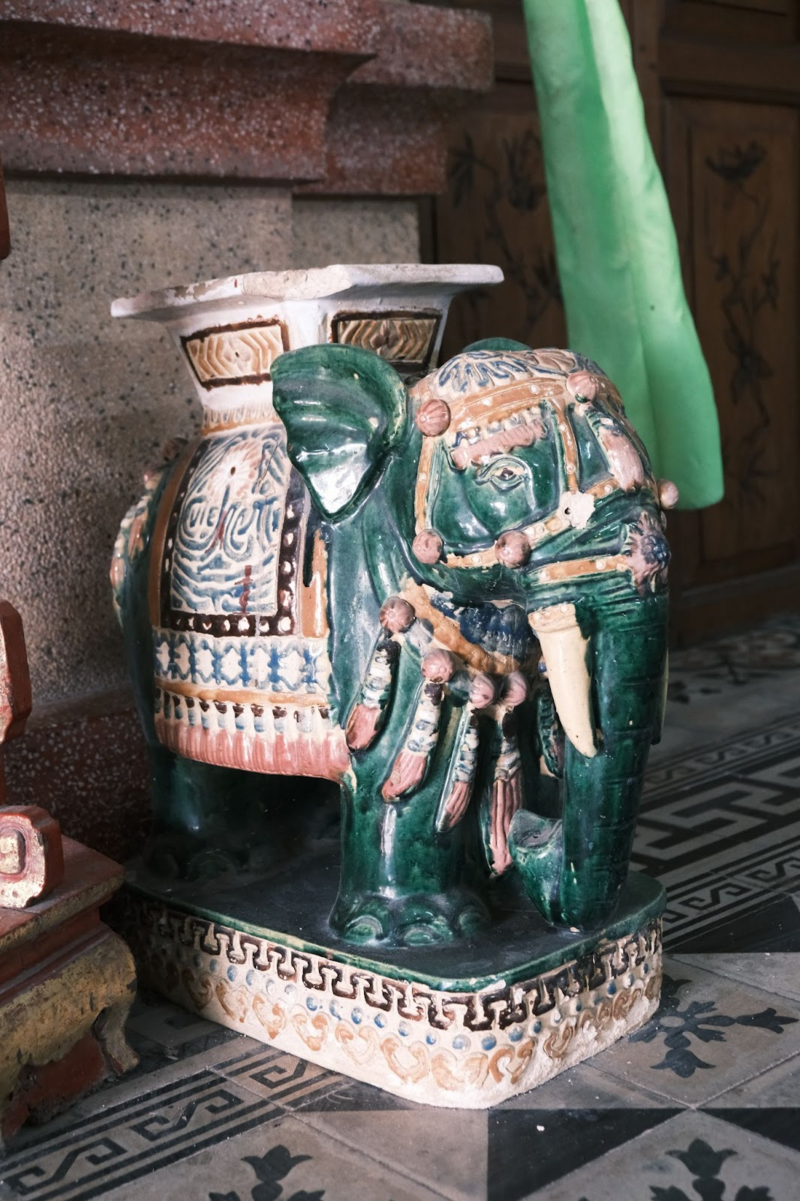
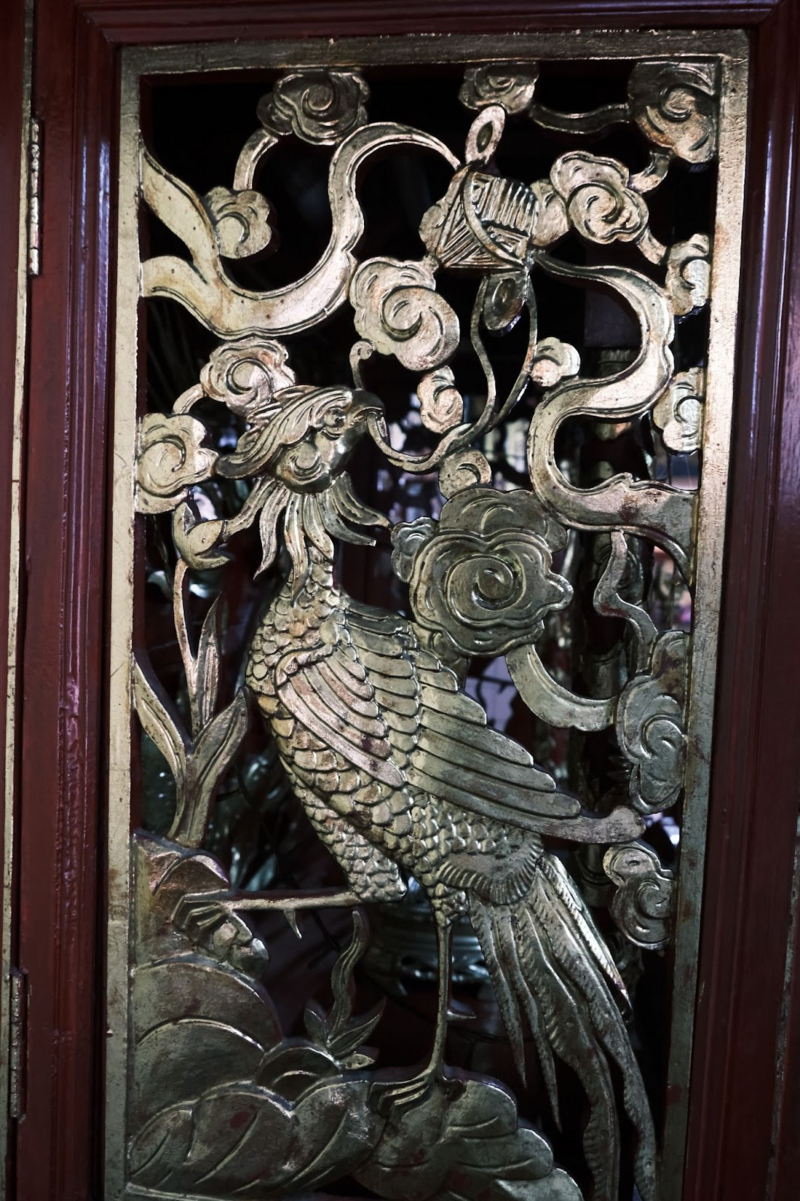

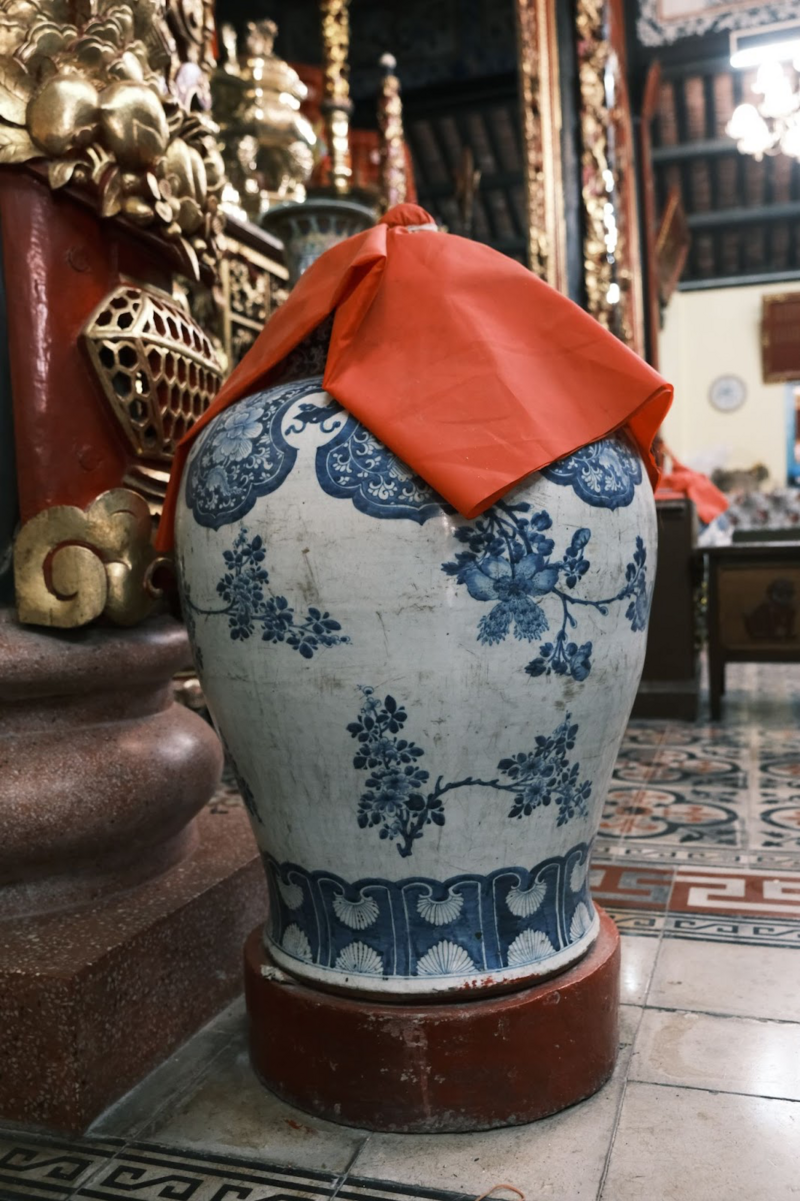
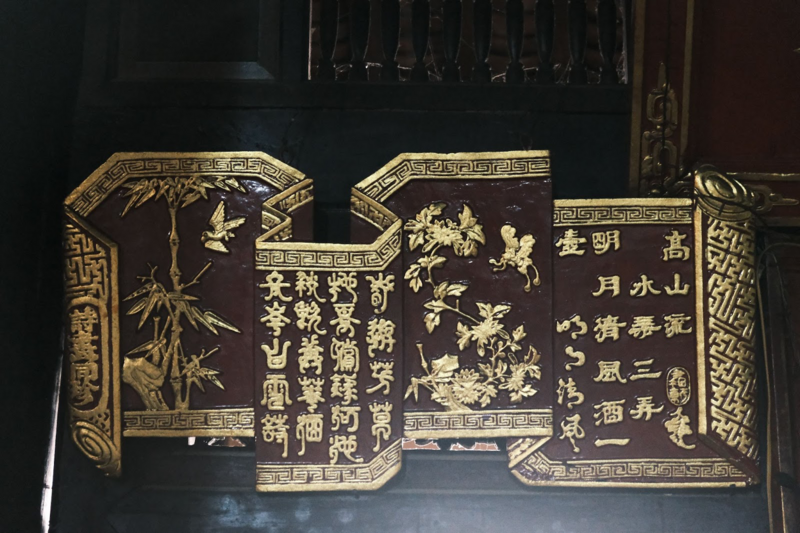

Originally, the temple was located on the banks of the Tien River. However, in 1904, due to severe damage caused by a storm, the riverbank suffered rapid erosion and deterioration. As a result, the temple was relocated to a higher, more open area about 300 meters from its original site. By early 1913, the relocation was completed, and Dieu Hoa Temple has remained at this location ever since.
It was during this time that the name "Dieu Hoa" was unanimously chosen for the temple. The word "Dieu" was taken from "Phong dieu vu thuan" (favorable winds and rains), symbolizing harmony with nature, while "Hoa" was derived from the names of the three hamlets, Hoa Thoi, Hoa My, and Hoa Hao, which belonged to the former Dieu Hoa village.
Initially, the temple was constructed mainly with traditional materials like bricks, tiles, wood, and stone. Later, as times changed, modern materials such as cement and ceramic tiles were used during renovations to improve the durability and safety of the structure.
“At Dieu Hoa communal house, there are no shortages of areas that have been renovated, repainted, or replaced, but these changes are inevitable as time progresses.”
In the rear section, wooden pillars have been reinforced with metal supports. In the main sanctuary, the main doors have been replaced, and the windows have been repainted. While many elements have gradually been replaced with modern materials, creating a fresher and newer appearance, one can't help but wonder about the historical value and the era that such relics like Dieu Hoa temple represent.
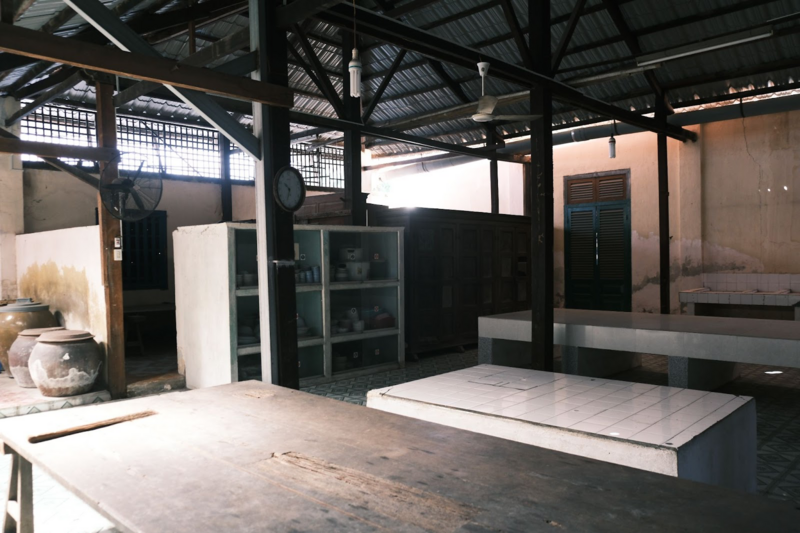
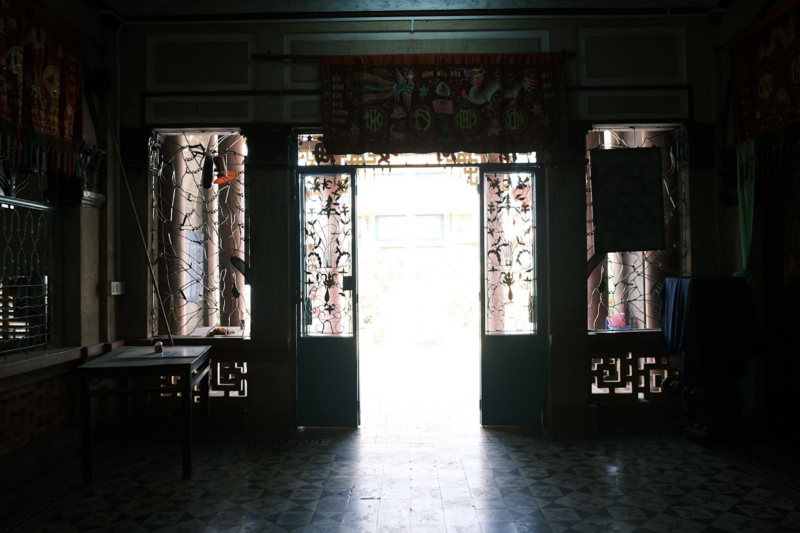

So how can we ensure the structural integrity of the temple over time while preserving the inherent beauty of a historical building? This is a question that not only we but also many others concerned with historical relics, are still trying to answer.
"When we truly care, we strive to preserve the original values of these ancient structures as much as possible.
But nothing can outlast time; even ancient temples eventually need renovation and repair..."
The more we understand the rapid changes of modern times, the more we feel the urge to preserve images and documents of these old architectural works. Perhaps, on this journey of rediscovering culture and history that we are pursuing, the opportunity to visit, explore, and witness structures and artifacts that have been nearly perfectly preserved is truly a blessing.
For who can say whether, many years from now, temples like Dieu Hoa will remain as they are today?
